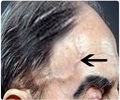ORLANDO — According to the recent report by the American Heart Association, Asymptomatic peripheral artery disease (PAD) is a cause of concern for American adults. Statistics show a gradual increase in the number of American adults coming down with the condition.
PAD is a condition arising out of the collection of fatty deposits in the artery walls. This results in insufficient blood supply and circulation to the limbs. When this happens, the chance of death due to heart disease and stroke is high.“We were interested in seeing if the prevalence of peripheral artery disease in the general U.S. population is increasing, specifically among people who don’t have known coronary artery disease,” said Andrew D. Sumner, M.D., lead author of the study and a cardiologist and medical director of the Heart Station and Cardiac Prevention at Lehigh Valley Hospital in Allentown, Pa.
Researchers hypothesized that the prevalence of asymptomatic PAD is increasing and the escalation is associated with a rise in the prevalence of other common cardiovascular risk factors, including diabetes, smoking, obesity and hypertension.
Sumner and colleagues analyzed data from three successive National Health and Nutrition Examination Surveys (NHANES), conducted in two-year increments between 1999 and 2004. They identified PAD prevalence by identifying people with an ankle-brachial index of less than 0.9.
“The ankle-brachial index measures the ratio of the blood pressure in the arms and legs, and if it is less than 0.9, people by definition have PAD,” he said.
The researchers then examined the prevalence of associated cardiac risk factors of obesity, diabetes, hypertension and smoking in 5,376 participants, age 40 and older, with no prior history of cardiovascular disease. They found that PAD prevalence among asymptomatic adults 40 years and older significantly increased from 3.7 percent in the 1999-2000 survey to 4.2 percent in the 2001-02 survey and 4.6 percent in the 2003-04 survey.
Advertisement
“PAD is affecting more people in the United States and will continue to do so because the prevalence of this problem increases as we get older, and we have an aging population,” Sumner said. “And this increase is associated with an increase in common cardiac risk factors.”
Advertisement
Doctors, on the other hand, should note that PAD prevalence is rising and that many of the accompanying risk factors, such as hypertension, can be treated.
“Doctors need to be looking for PAD in asymptomatic patients,” he said. “And we need to more aggressively address the risk factors associated with this increase in prevalence.”
The next step, from a public health perspective, is to reassess the protocols and systems that exist for evaluating PAD in asymptomatic people, he said.
Source-Eurekalert
SAV/M






